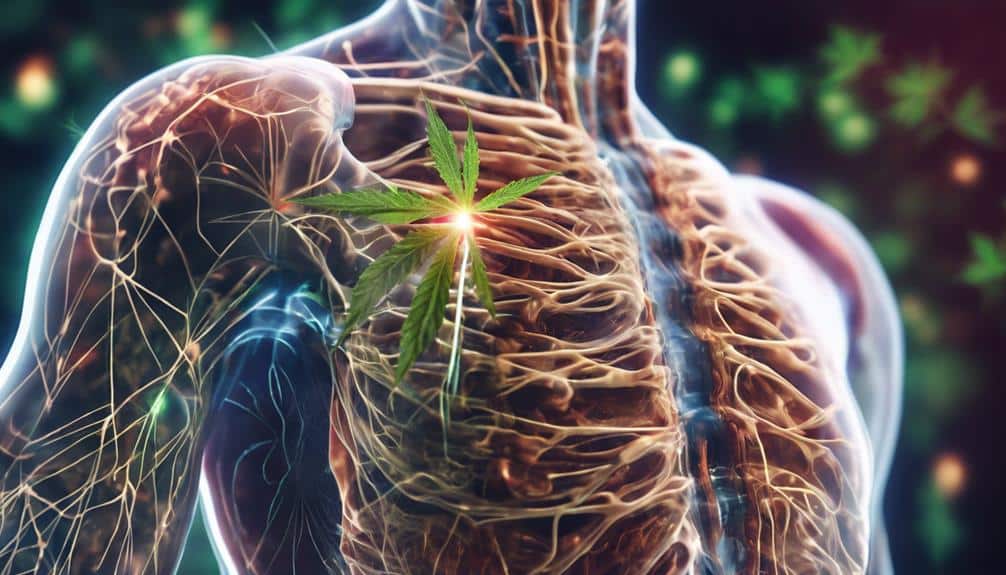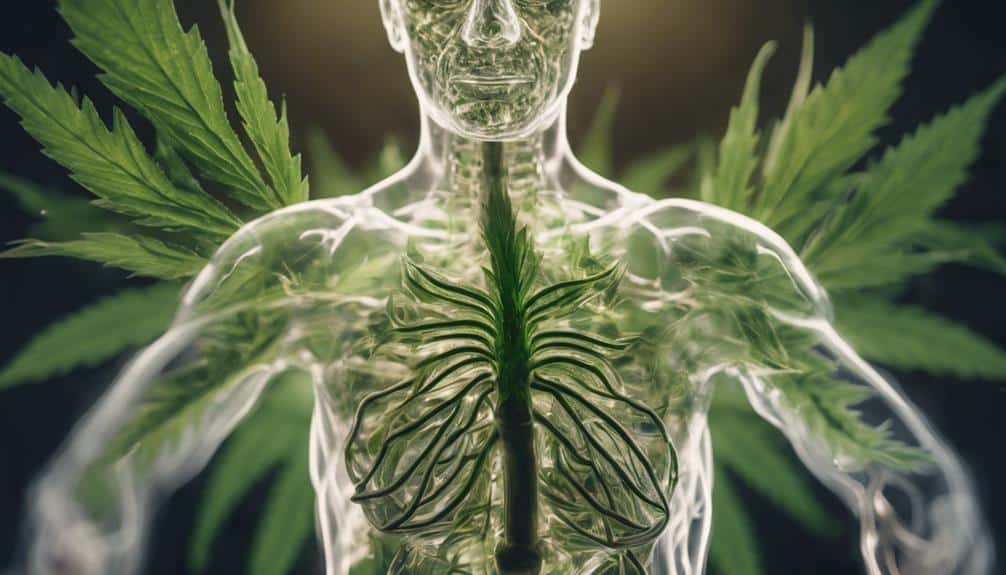Imagine a world where chronic pain is as manageable as a fleeting headache. You’ve probably heard about cannabis being used for pain relief, but have you ever wondered about the science behind it?
Table of Contents
Cannabis isn’t just some magical plant; it’s a complex interaction with your body’s endocannabinoid system that can potentially offer relief. Of course, it’s not all roses and sunshine; there are risks and considerations to ponder.
So, wouldn’t you like to know more about this intriguing topic?
Understanding Chronic Pain

To fully grasp the potential of cannabis in alleviating chronic pain, you first need to understand what chronic pain actually is and how it impacts the human body. Chronic pain is a persistent type of pain that lasts longer than 12 weeks; it’s not just a symptom but a disease itself. It’s often linked to conditions like arthritis, fibromyalgia, or migraines. But it’s not limited to these conditions, and the causes can be diverse.
Understanding pain perception mechanisms is crucial to deciphering chronic pain. Pain perception involves a series of chemical signals sent from the site of injury through the peripheral nerves up to the brain. However, in cases of chronic pain, these signals keep firing even when the initial injury has healed.
The psychological impact of chronic pain can be as significant as its physical discomfort. It’s associated with symptoms of depression, anxiety, and sleep disturbances. The constant discomfort can lead to feelings of helplessness, often exacerbating the psychological effects.
In your quest to serve others, understanding the multi-dimensional nature of chronic pain is key. It’s not just about physical suffering; it involves a complex interplay of biological and psychological processes.
The Endocannabinoid System Explained
Delving deeper into the relationship between cannabis and chronic pain, it’s essential you understand the endocannabinoid system. This complex cell-signaling system in our bodies plays a key role in regulating a range of functions and processes. This system is actively involved in maintaining homeostasis, or the body’s internal balance, in response to environmental changes.
Endocannabinoids are naturally produced in our bodies and are similar in structure to cannabinoids found in cannabis. These endocannabinoids act like neurotransmitters, sending chemical messages between nerve cells throughout the nervous system.
A crucial aspect to grasp is how receptors within this system function. There are two main types of receptors—CB1 and CB2—scattered throughout the body. CB1 receptors primarily influence functions like mood, memory, and sleep while CB2 receptors affect inflammation and pain.
Research shows that when there’s a deficiency or problem with our endocannabinoid system, it can result in various health issues including chronic pain. Understanding this system provides the framework for grasping how cannabis could potentially offer pain relief—a significant piece of the puzzle in understanding cannabis’ relationship with chronic pain.
How Cannabis Interacts With the Body

After understanding the role of the endocannabinoid system, it’s easier to grasp how cannabis interacts with your body to potentially provide relief from chronic pain. The process involves cannabis metabolism and strain variations, which contribute to the plant’s effectiveness.
- Cannabis Metabolism: When you consume cannabis, your body metabolizes it into various compounds, primarily THC and CBD. These compounds bind to receptors in your endocannabinoid system.
- Strain Variations: The effectiveness of cannabis in relieving chronic pain can significantly vary depending on the strain. Different strains have different levels of THC and CBD, influencing their pain-relieving efficacy.
- Interaction with the Endocannabinoid System: The THC and CBD compounds bind to CB1 and CB2 receptors in your endocannabinoid system. This interaction can potentially alter pain perception, providing relief.
In essence, understanding the interplay between cannabis metabolism, strain variations, and the endocannabinoid system is crucial in comprehending cannabis’ potential for chronic pain relief. As you strive to serve others remember that this interaction is a complex process influenced by various factors requiring comprehensive understanding and careful application.
Cannabis’ Role in Pain Management
The role of cannabis in pain management involves a deep dive into numerous studies revealing its potential effectiveness in alleviating chronic discomfort. You’ll find that cannabinoid pharmacology plays a significant part here.
Cannabis contains cannabinoids—compounds that interact with our body’s own endocannabinoid system. This interaction can reduce inflammation and alter pain perception offering a potential avenue for relief.
Moreover, advancements in medical marijuana legislation have allowed for more comprehensive studies to be conducted. This is crucial since it’s through these research efforts that we’ve begun to unveil the precise ways in which cannabis can modulate pain. For instance, a systematic review in the Journal of Pain found significant evidence that cannabis can decrease chronic pain in adults.
But it’s important to remember that while cannabis may show promise in pain management, it’s not a one-size-fits-all solution. Much like any other therapeutic agent, its effects can vary among individuals.
Continuous research is needed to further understand its role, determine optimal dosing, and ascertain long-term impacts. This way you’re better equipped to serve those living with chronic pain by offering informed and compassionate care.
Risks and Considerations of Cannabis Use

While cannabis shows potential in pain management, it’s crucial to consider the associated risks and implications of its use as its effects can vary significantly among individuals.
Let’s delve into three key considerations:
- Addiction Potential: Though some people use cannabis without negative effects others can develop an addiction. Research shows about 9% of users become addicted with the number rising to about 17% for those starting in their teens. Given this risk it’s essential to approach cannabis use with caution.
- Legal Implications: Despite changes in some states cannabis remains illegal under federal law in the U.S. Use, possession, or distribution could have serious legal consequences. Always stay informed about your local laws.
- Individual Tolerance and Response: Cannabis impacts everyone differently. Some may experience relief while others could have adverse reactions like anxiety or paranoia.
You’re not just serving yourself but also the people around you. Your health decisions can influence others. So before considering cannabis for chronic pain relief weigh the potential benefits against these risks. Make an informed choice that prioritizes your wellbeing and respects your community’s legal guidelines.
Conclusion
If you’re wrestling with chronic pain science suggests cannabis might be a potential solution. It seems to interact perfectly with your body’s endocannabinoid system potentially easing pain and improving your quality of life. But remember it’s not all rainbows and unicorns—be mindful of the risks and weigh them against the potential benefits. After all, you’re in charge of your own health journey, so make sure to chart its course wisely.
I invite you to take a step further in your journey towards relief by visiting us at Cannabis Docs of Delaware. We’re here to provide more information answer any questions you might have and guide you through your options. We genuinely care about your wellbeing and are committed to helping you make informed decisions whether you’re just curious or ready to dive in give us a call we’d love to hear from you and support you in your quest for a better quality of life.

